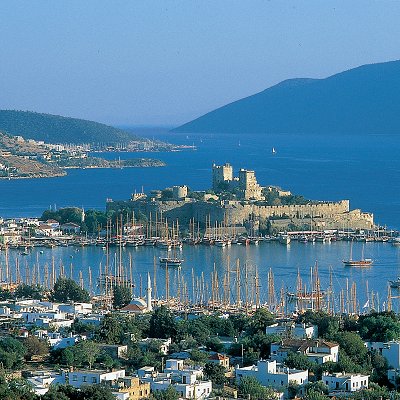
Like us on Facebook
PLACE NAMES


 
|
|
Muğla
|

|
| |
|

Mugla is a city in south-western Turkey. Mugla is the center of the District of Mentese and Mugla Province , which stretches along Turkey's Aegean coast. Mugla's center is situated inland at an altitude of 660 m and lies at a distance of about 30 km (19 mi) from the nearest seacoast in the Gulf of Gökova to its south-west. Mugla (Mentese) district area neighbors the district areas of Milas, Yatagan and Kavaklidere to its north by north-west and those of Ula and Köycegiz, all of whom are dependent districts. Mugla is the administrative capital of a province that incorporates internationally well-known and popular tourist resorts such as Bodrum, Marmaris, Datça, Dalyan, Fethiye, Ölüdeniz and also the smaller resort of Sarigerme.
The district area's physical features are determined by several pot-shaped high plains abbreviated by mountains, of which the largest is the one where the city of Mugla is located and which is called under the same name (Mugla Plain). It is surrounded by slopes denuded of soil, paved with calcerous formations and a scrub cover which gives the immediate vicinity of Mugla a barren look uncharacteristic for its region. Arable land is restricted to valley bottoms.
A relatively small city of 74,371 (2019 census) and often overlooked by visitors to nearby coastal resorts, Mugla received a new boost with the foundation of Mugla University in the 1990s. Today, the university brings together a student community of several thousands and, added by its academia and staff, it played a key role in bringing movement to the city and in opening it to the outside world. Its former profile as a predominantly rural, difficult to access, isolated and underpopulated region enclosed by a rugged mountainous complex is now coming to an end. Also in recent years, a major program of restoration of the city's architectural heritage has enhanced local tourism. The city remains an orderly, compact and leafy provincial center, which kept its old neighborhoods without surrendering to a boom in concrete constructions, but displays a progressive mind as exemplified by the pride still expressed at having had Turkey's first female provincial governor in the 1990s, Ms. Lale Aytaman. Nevertheless, Mugla still lacks sizeable manufacturing and processing centers and relies on trade, crafts, services, tourism and agriculture in its economy. Therefore, tourism in Mugla is a great employment opportunity for the local community and fertile soils and suitable climate conditions also give an opportunity to harvest variety of products for people who deals with the agricultural sector.
Places of interest include:
- Great Mosque of Mugla (Ulu Cami) - large mosque built in 1344 by the Beys of Mentese
- Konakalti Han and Yagcilar Han - restored 18th century caravanserais, the first used as an art gallery and facing Mugla Museum, and the second used for more commercial purposes
- Kursunlu Cami - large mosque built in 1495
- Mugla City Museum has a good collection of archaeological and ethnographical artefacts, as well as 9 million years old animal and plant fossiles recently discovered in Kaklicatepe nearby
- the Ottoman Empire-era bazaar (Arasta) - marked by a clock tower built by a Greek craftsman named Filivari Usta in 1895
- Vakiflar Hamam - a still operating Turkish bath which dates back to 1258
The old quarter of Mugla - on the slopes and around Saburhane Square (Meydani), consisting of about four hundred registered old houses dating from the 18th and 19th centuries, many of which are restored. These houses are mainly in the Turkish/Ottoman style, characterized by hayat ("courtyard") sections accessed through double-shuttered doors called kuzulu kapi ("lamb doors") and dotted with chimneys typical of Mugla. But there are also a number of "Greek" houses. The differences between the two types of houses may have as much to do with the extent to which wood or stone were used in their architecture, and whether they were arranged in introverted or extraverted styles, as with who inhabited them previously.
Local students tend to hang out in open air cafés along the Izmir highway or in the caravanserai or in Sanat Evi ("Art House"), an Ottoman style residence that has been turned into a café/art gallery exhibiting principally wood carvings.
|
 Feel free to Email me any additions or corrections Feel free to Email me any additions or corrections
LINKS AVAILABLE TO YOUR SITE
| |





